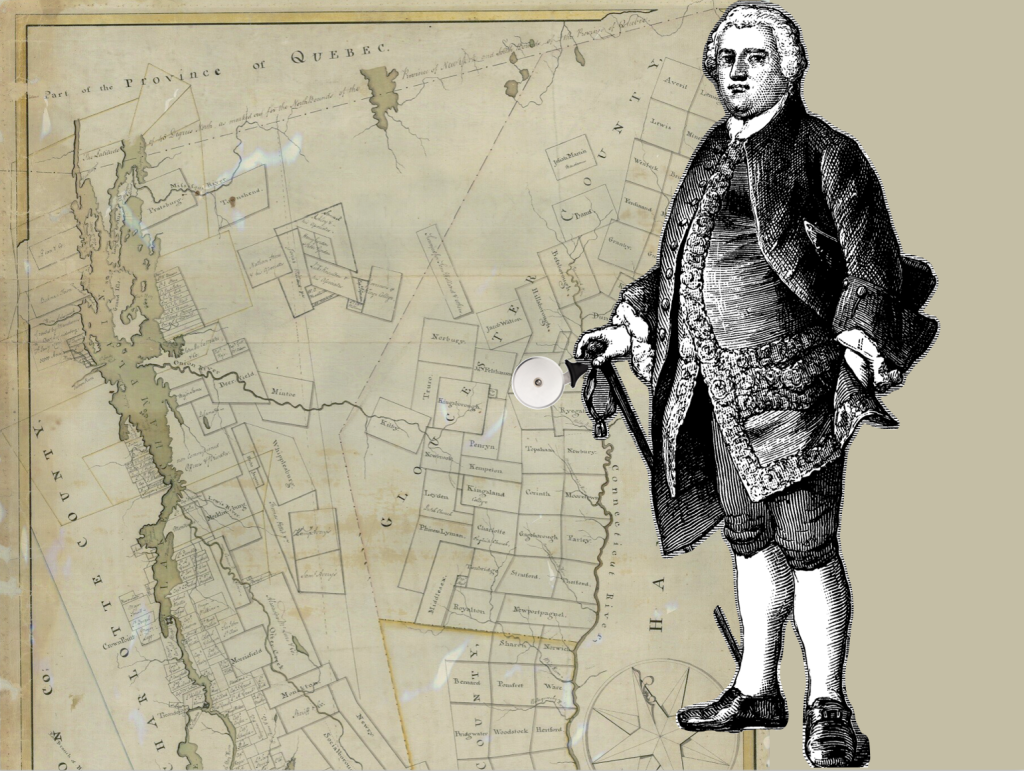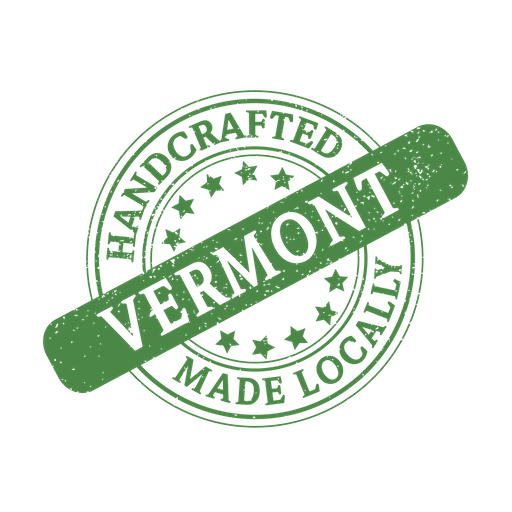or, how we got our school district borders

Remember the pizza they served in the school cafeteria? Roughly rectangular in shape, with ragged edges, and sliced into squares. That’s where our Vermont town and school-district lines originated.
First the Creator rolled out our dough of bedrock: sedimentary slate, metamorphic marble, and grainy granite. Then sifted on a sprinkling of soil. Then poured on rivers of water (much of which puddled into one corner.) Finally she poked in a topping of trees. Baked in the ovens of time, this masterpiece became our beloved State of Vermont.
A few Algonquins nibbled at the edges, but the dish was largely untouched until the arrival of Europeans in the18th century. Suddenly, the pie became valuable. Seeing an opportunity for a quick buck in 1749, the Governor of New Hampshire, Benning Wentworth, who had been gifted what is now Vermont by King George II, acted as the lunch lady. With his sharp, round pizza-cutter he sliced a blank Vermont map into squares of six miles each, paying no attention to mountains, rivers, forests, or lakes. At that time, nobody knew exactly where these were anyway.

Look at a town map of Vermont and you’ll see how the pizza slices.
Benning named the unvisited square slices after his favorite places in England, his friends, and himself, and sold them for 20 pounds each. So we have towns named Bennington, Ferdinand, Lewis, Burke, Dorset, and Tinmouth. Others must have been sold to French speakers from up north: Calais, Montpelier, Vergennes. He sold them sight unseen. Buyers, called Grantees, often wealthy Englishmen, then paid Ira Allen (brother of Ethan), Samuel Morey, or Joseph Fay to survey their slice and stake their claim.
As settlers began moving up along the river valleys from Massachusetts in the south, and down the rivers from Quebec in the north, the slices became more valuable. Grantees and surveyors hoped to fill their pockets. But the settlers paid little attention to where one slice ended and another began. Most of the lines had not been surveyed, and few were marked. So the first settlers farmed in the valleys, and established settlements in the places is best suited for human habitation. Many had no idea which town they were in or who owned it.
In fact, the governor of New York, George Clinton, also claimed a royal right to sell slices out of what had now become valuable land. This dispute caused much fussing among the grantees, the settlers, the surveyors, and the governors. But before Clinton could wield his own pizza cutter, the King reneged on his rights and supported the New Hampshire claims.
Let’s follow some early settlers up the Winooski River from Lake Champlain. The first ones grabbed the flat agricultural land that we now called the Champlain Valley. There they would clear the trees, pasture their animals, form their villages and grow their crops. Most had no idea whose slice they were living in. They paid no attention to the invisible lines. Only after they’d been there a while did someone come along and attempt to get them to pay for what they had settled on.
They did not know, when they built their house in what is now Waterbury, that the slice line for Duxbury went right through their living room. Farmers farther up the river valley only later discovered that their house was in Moretown, but their barn was in Middlesex. Shepherds in what is now East Dorset did not care if they could only get to West Dorset by following the river valleys through the slice called Manchester.
That’s why our settlement patterns, our transportation routes, and our economy developed according to our geography, not bound to the tracks of Benning Wentworth’s pizza cutter.
But somehow 250 years later, we are still using those arbitrary pizza-cutter tracks to define our educational system. Maybe it’s time to take a more organic approach, put the pizza cutter into the dishwasher, and set the educational table according to where the students live, where our schools are located, and where Vermonters form their communities. In this way education might be more closely tied to our people, cost less, and serve students better.

Leave a Reply